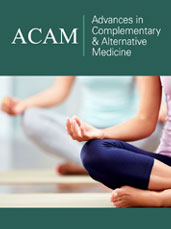- Submissions

Abstract
Advances in Complementary & Alternative medicine
Effect of Three Forms of Allium sativum Bioactive Compounds on Blood of Adult Wistar Albino Rats
-
Open or CloseNweze CC*, Abdullahi MH and Emecheta MA
Department of Biochemistry and Molecular Biology, Nigeria
*Corresponding author: Nweze CC, Department of Biochemistry and Molecular Biology, Nigeria
Submission: January 21, 2018; Published: January 25, 2019

ISSN: 2637-7802Volume3 Issue5
Abstract
The medicinal properties of Allium sativum have been known since the ancient times. Among its effects is a beneficial action on the development of atherosclerosis, hyperlipidemia, cholesterolemia, and hypertensive experimental paradigms both in vivo and in vitro. The present work compared the beneficial effects of three forms of garlic; raw Allium sativum (functional food), Allium sativum extract (nutraceutical), and synthetic Allium sativum (pharmaceutical) on lipoproteins and haematology of blood plasma. The study was carried out by feeding adult Wistar albino rats. Fourty adult Wistar albino rats divided into four groups of ten rats each. Group 1 was fed with functional food Allium sativum, group 2 with a nutraceutical Allium sativum, group 3 with nutriceutical Allium sativum and group 4 the control for six weeks.
The blood sample was collected by cervical decapitation into plain test tube and EDTA test tube using a 2ml syringe 24h after the last feed, and then lipid profile and haematological parameters were analyzed. The results showed that functional food group 1 garlic significantly (p< 0.05) increased the RBC, haemoglobin concentration and platelet counts and decrease in the WBC compared to the group treated with nutraceutical group 2 and nutriceutical groups 3. The functional food group 1 administration produced a significant (p< 0.05) decreased in CHOL, TG and LDL with a significant increase in HDL level compared to group 2 and 3. Thus, the the functional food group 1 garlic improved the lipid profile and hematological activities of the adult wistar rats.
Keywords:Allium sativum; Nutraceuticals; Nutriceuticals; Functional foods
 a Creative Commons Attribution 4.0 International License. Based on a work at www.crimsonpublishers.com.
Best viewed in
a Creative Commons Attribution 4.0 International License. Based on a work at www.crimsonpublishers.com.
Best viewed in 







.jpg)






























 Editorial Board Registrations
Editorial Board Registrations Submit your Article
Submit your Article Refer a Friend
Refer a Friend Advertise With Us
Advertise With Us
.jpg)






.jpg)













.bmp)
.jpg)
.png)
.jpg)














.png)

.png)



.png)






